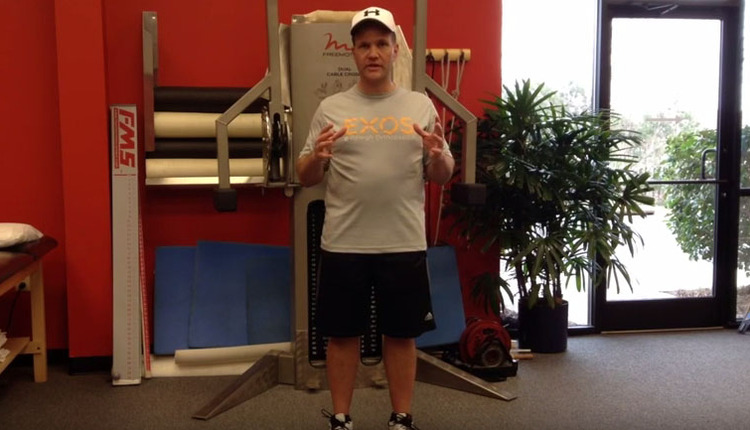
Poor posture, soft tissue tightness and insufficient rotator cuff and scapular strength can predispose the shoulder to increased injury risk. Excessive internal rotation and faulty scapular positioning along with poor mechanics can create friction/compression of the rotator cuff in certain positions. In my prior column, I spoke of the importance of soft tissue mobilization of the pectorals muscles to reduce internal rotation. This exercise progression will help further promote better alignment and optimal shoulder mechanics.

Execution: Affix theraband or tubing around an immovable object. Grasp the ends of the theraband in each hand. Keeping the elbows straight, pull the arms back to a point where there are even with the hips. Next, actively depress the scapulae and then pinch the shoulder blades together pausing for 1-2 seconds. Relax the shoulders again, while maintaining the shoulder extension. Repeat the retractions for 10-15 repetitions. The depression will help ensure no excessive upper trap substitution or shoulder shrug with the movement.
Variation: Grasp both ends of the theraband and wrap it a few times around each hand to generate proper tension. With the elbows at the side, pull the hands away from each other and pinch he shoulder blades at the same time. Do not let the shoulders rise up during the movement. Pause for 1-2 seconds and return to the start position. This method will further activate the posterior rotator cuff and improve external rotation strength.
Application: This exercise is designed to facilitate improved posture, strengthen the scapular stabilizers and rotator cuff and reduce injury risk by encouraging good biomechanics. Rotator cuff issues are common in those doing repetitive overhead lifts, pressing, and overhead activity. These simple postural exercises can be used as part of a warm-up routine or in conjunction with the workout itself.




















